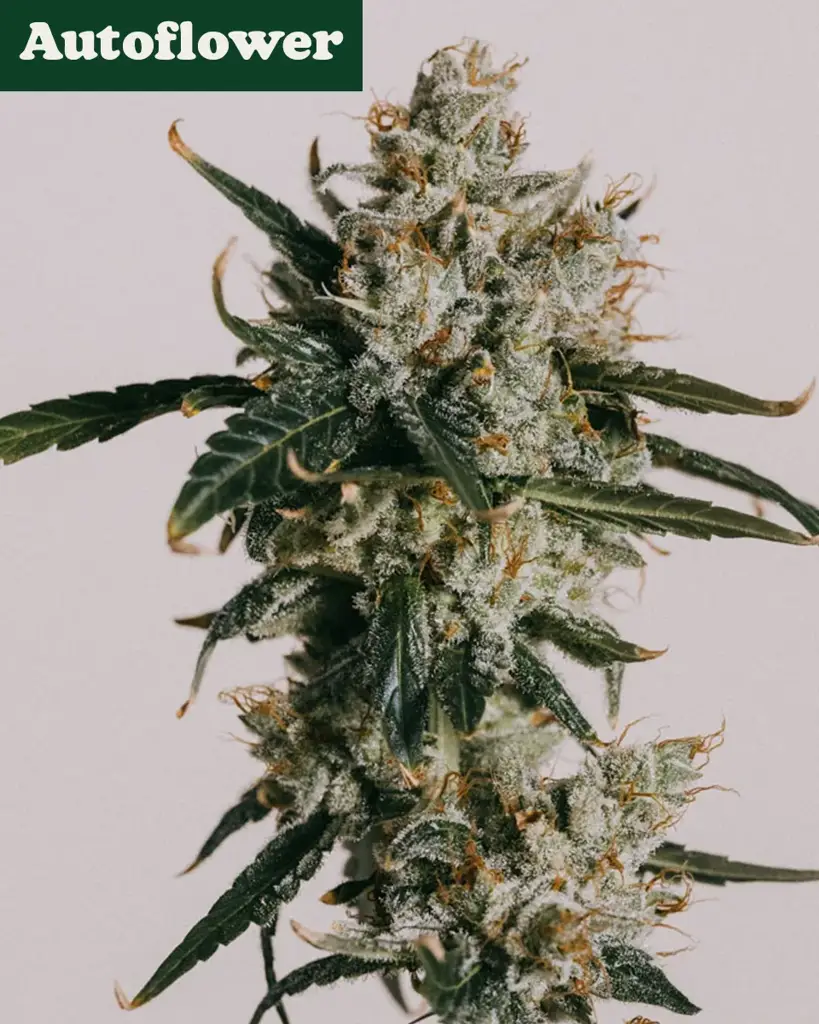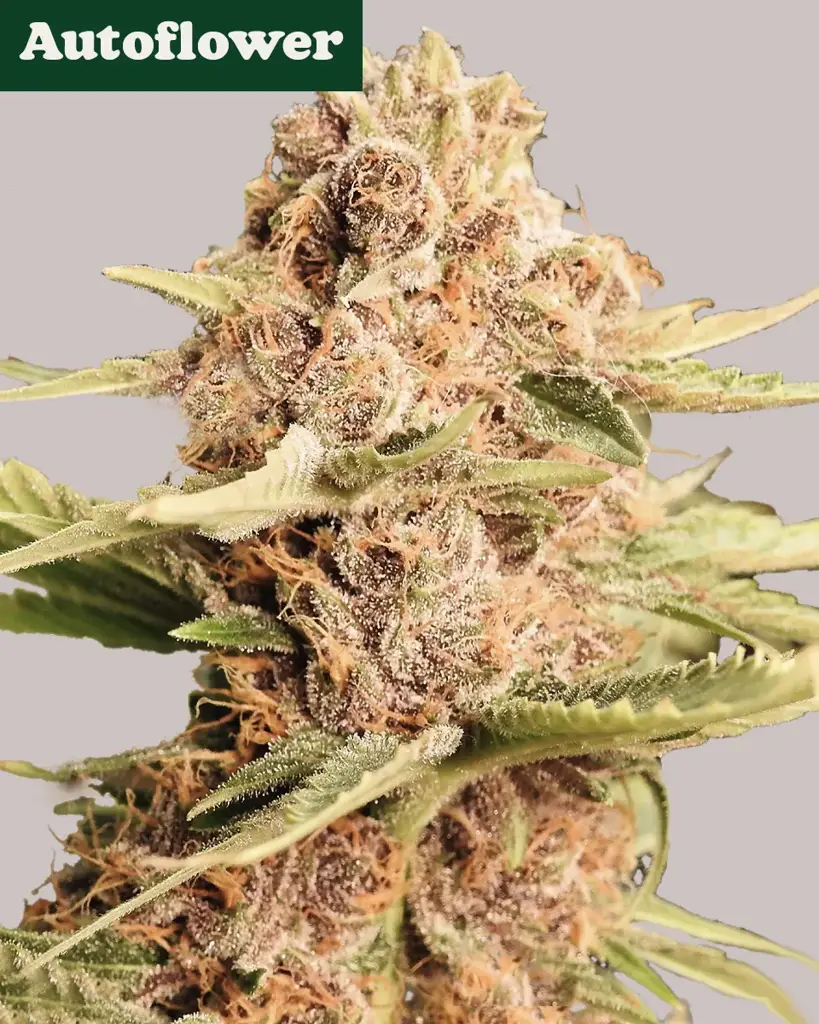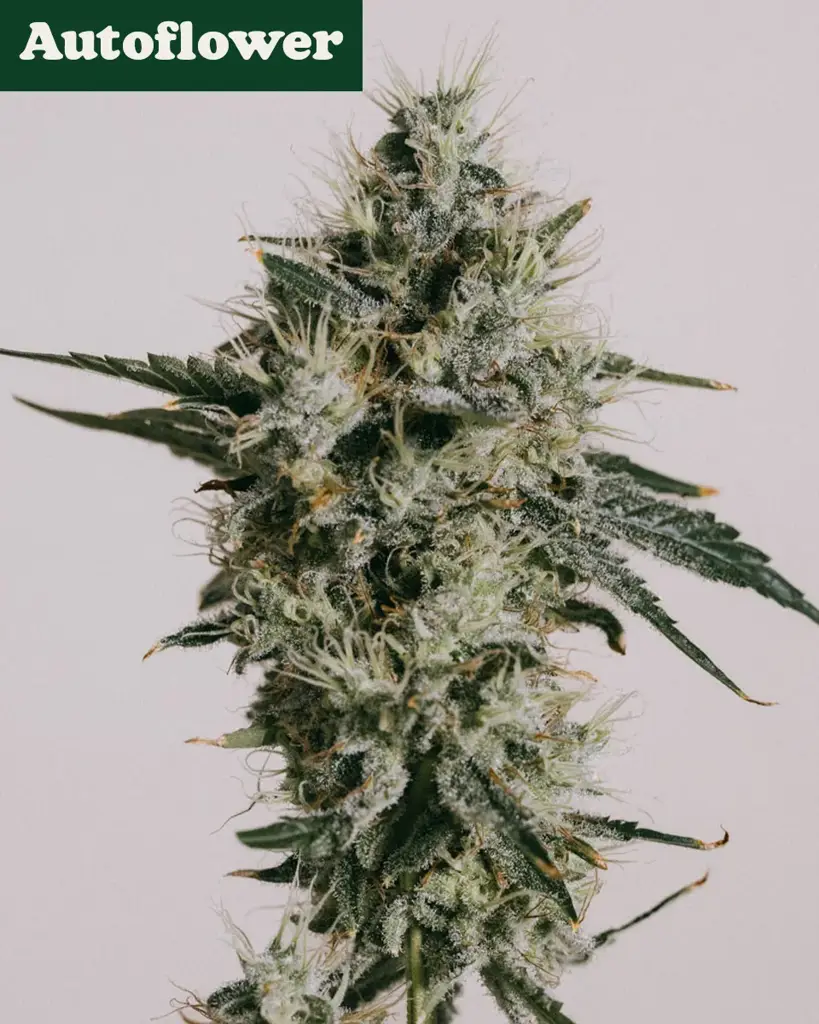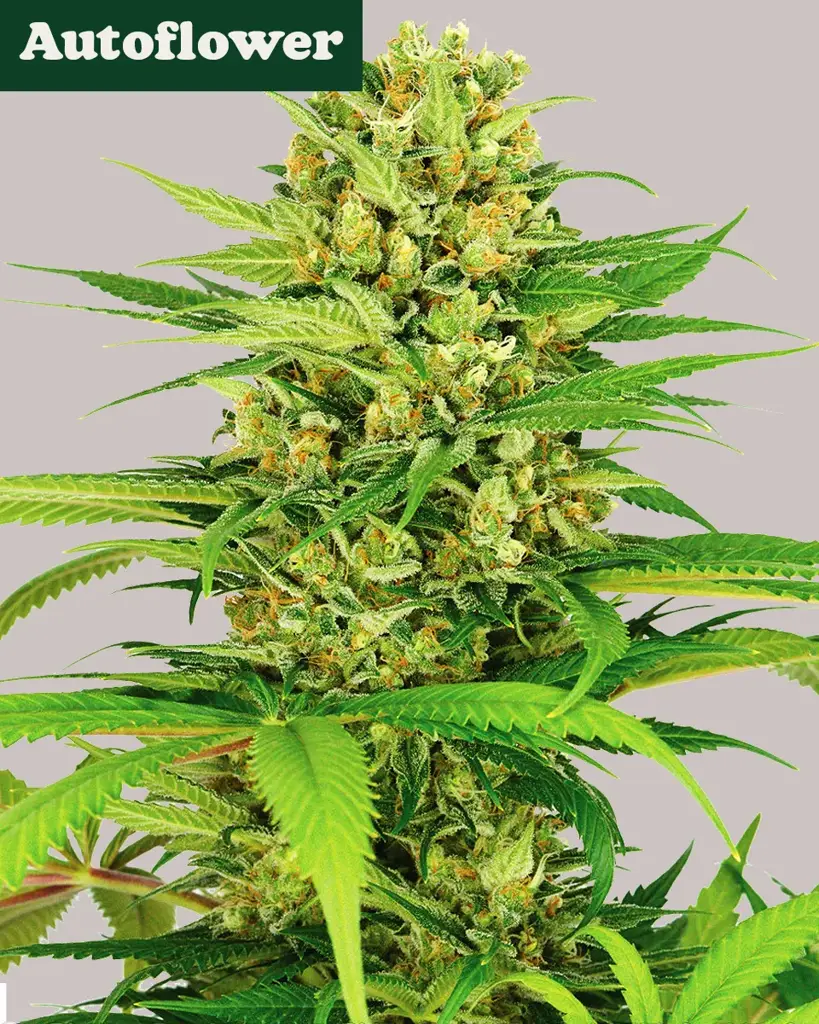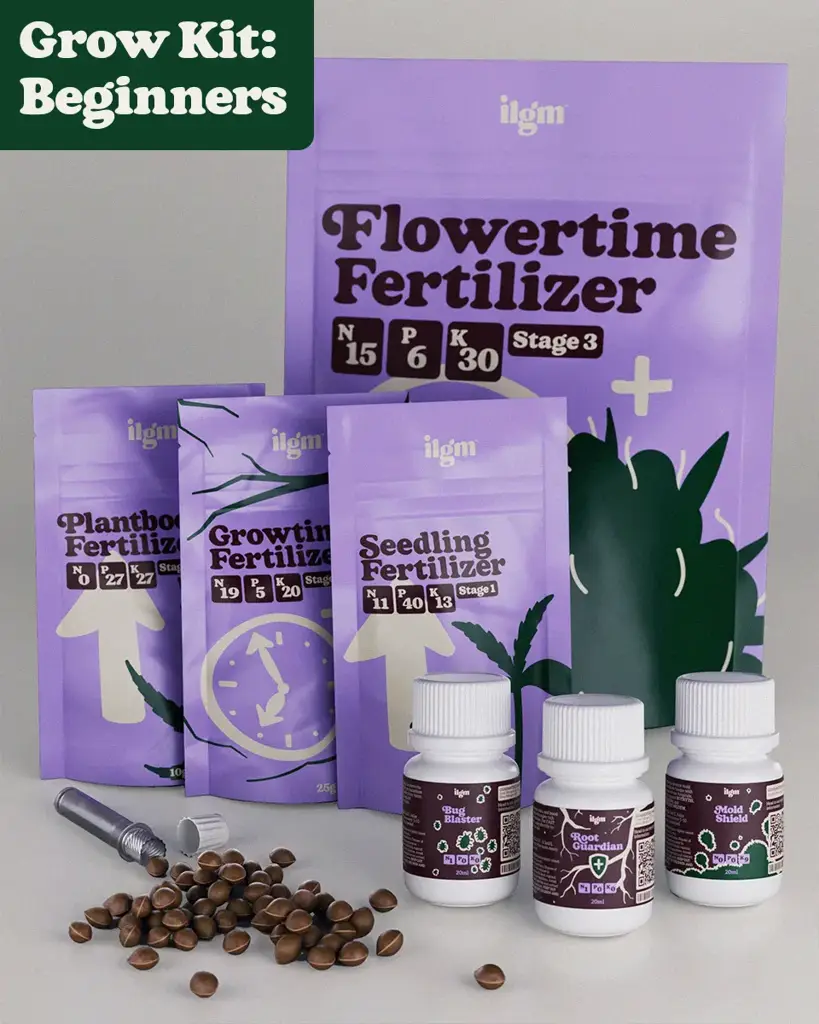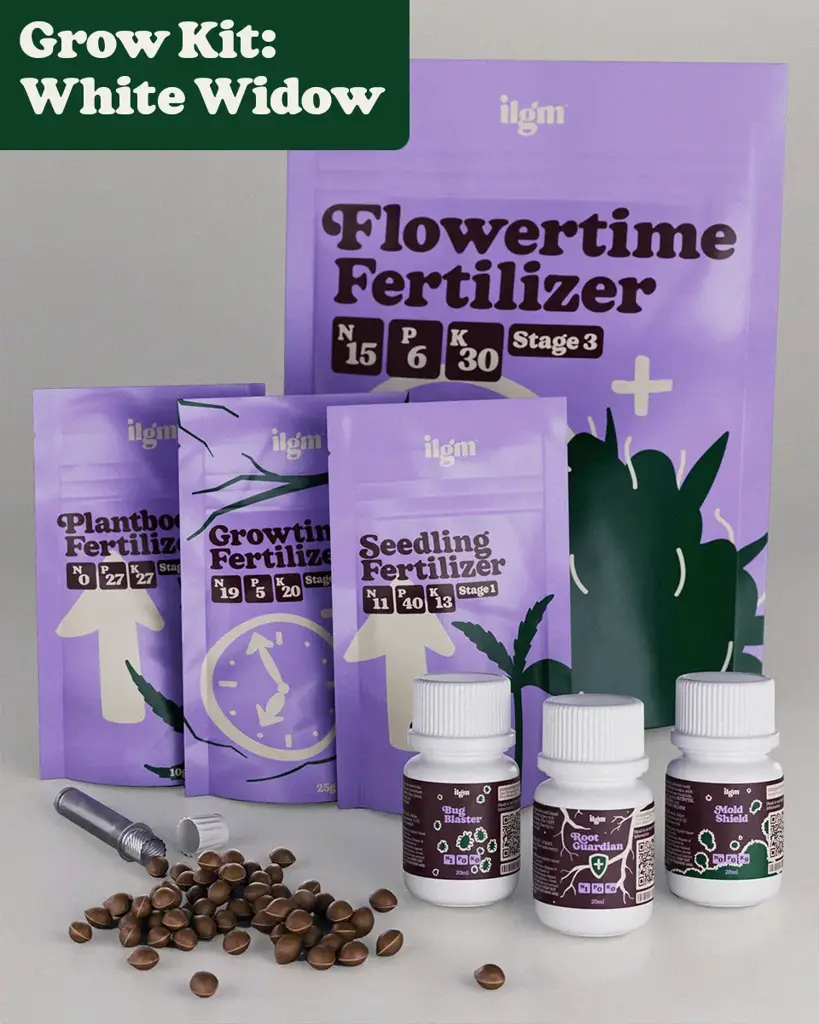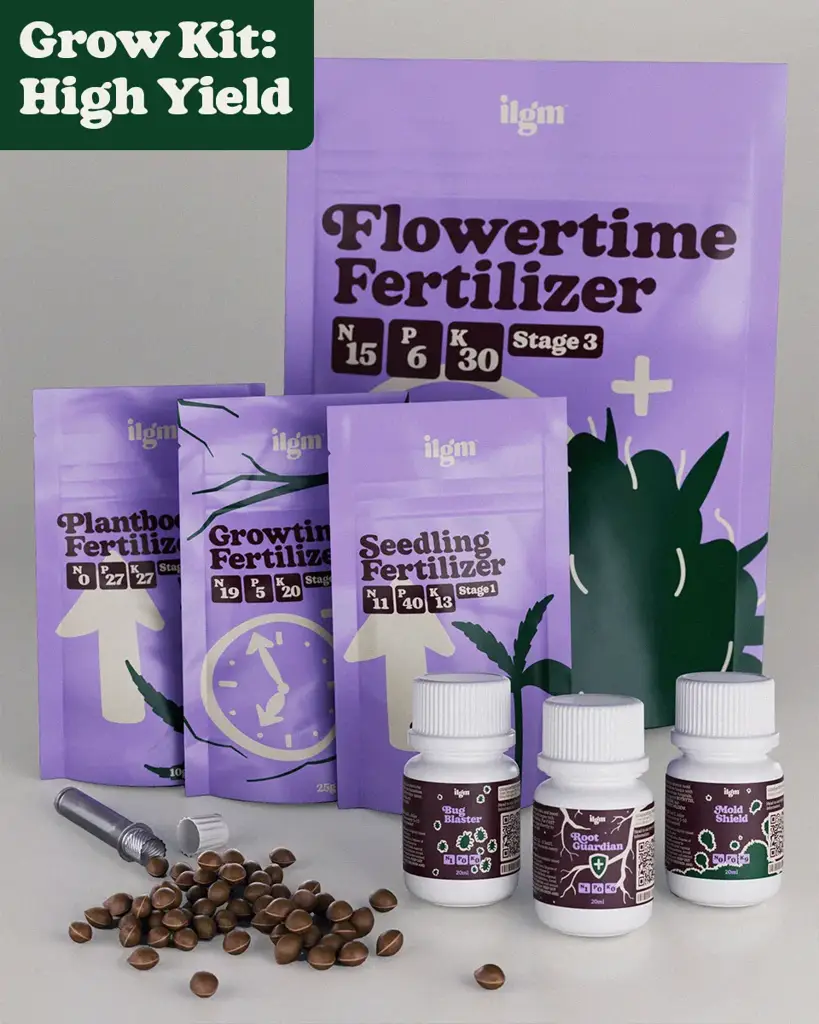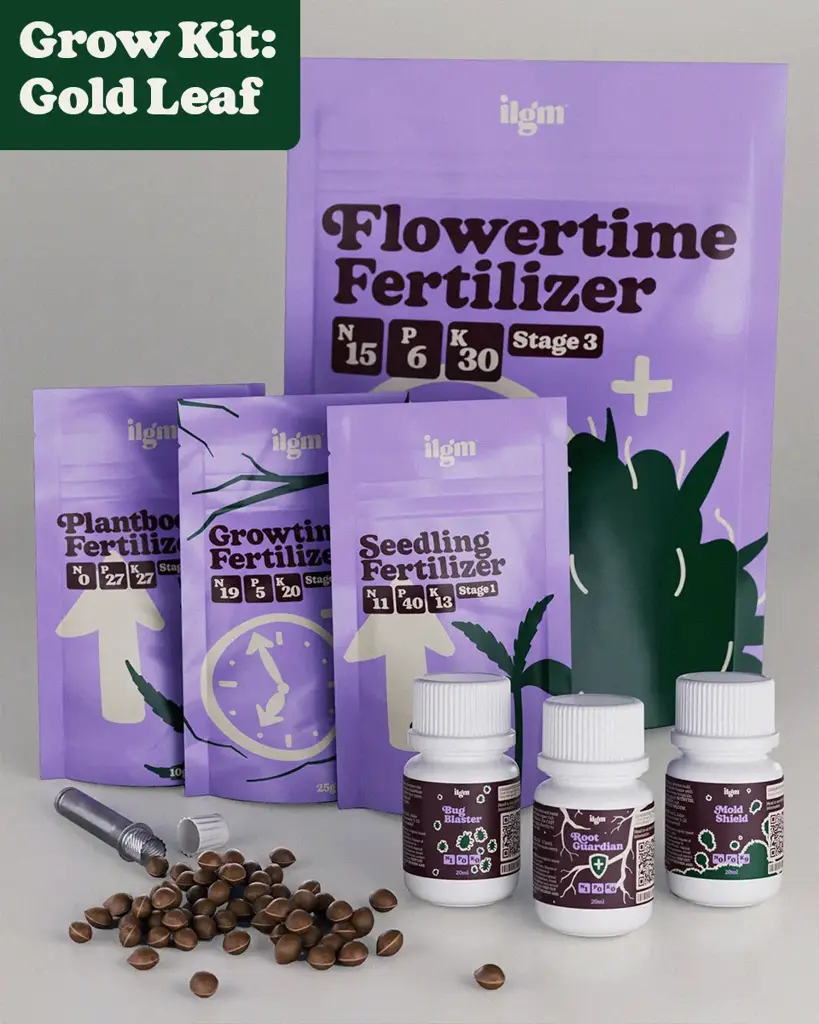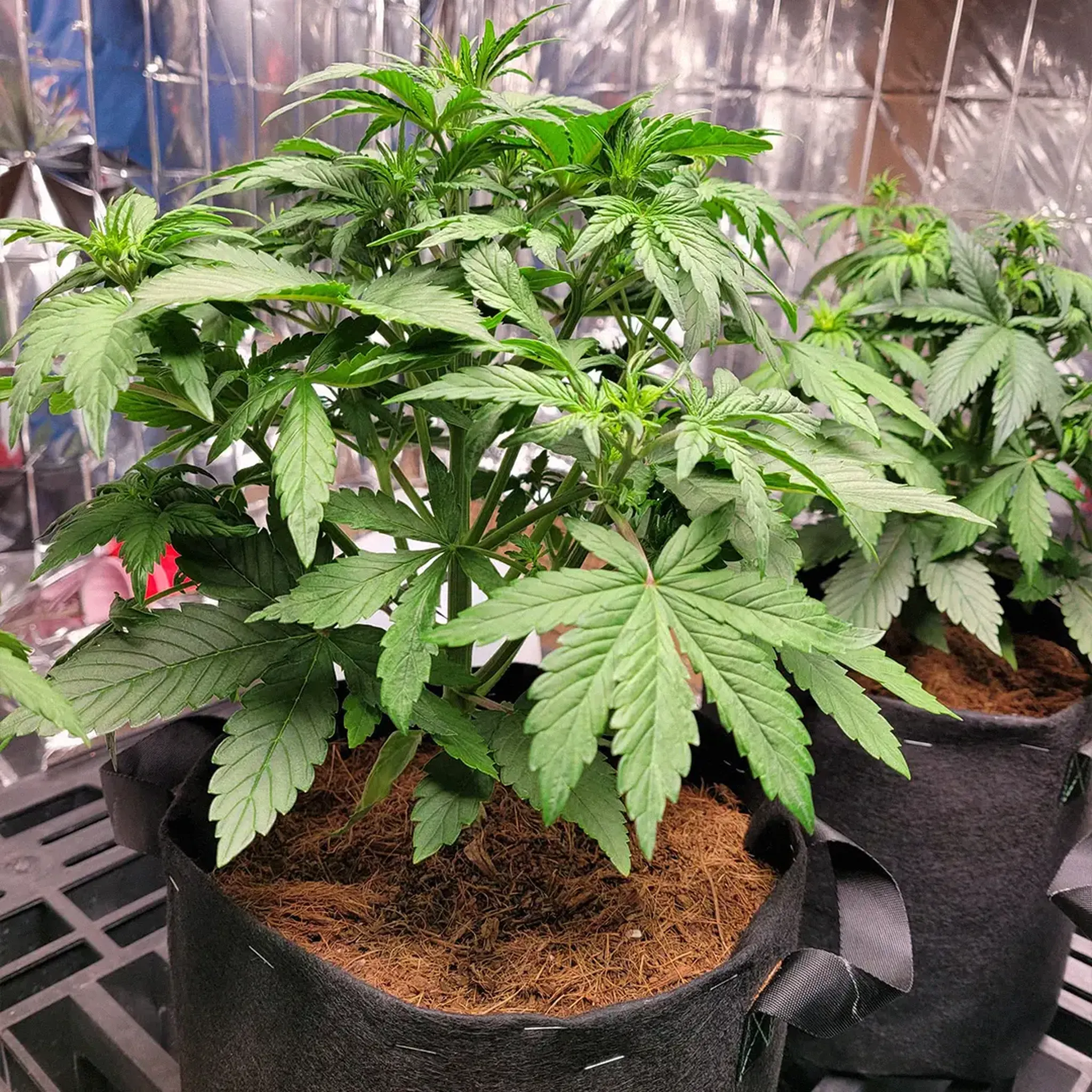
How To Grow Cannabis in Coco Coir
A simple guide to faster growth, bigger buds, and healthier roots—without the guesswork.
Table of contents
- What are the Benefits of Growing Cannabis in Coco Coir?
- Coco vs. Soil: What’s the Difference?
- How Do I Choose the Right Coco Coir for My Grow?
- How Should I Prepare Coco?
- What Are The Best Containers and Setup for Coco Coir?
- How Do I Water and Feed Cannabis in Coco Coir?
- What Are The Most Common Mistakes When Growing in Coco? And How Can I Avoid Them?
- More Things To Know About Your Coco Grow
Coco coir has been a game-changer for modern cannabis growing. It’s made from coconut husks, but don’t let that fool you, this stuff grows fire. Light, airy, and crazy efficient at holding water, coco gives roots room to breathe and lets you dial in your feed like a pro. Faster veg, thicker roots, and full control?
Bonus point: its a renewable material! That’s the coco life.
Why Grow Cannabis in Coco Coir?
Coco coir is an inert, airy, water-retentive medium that speeds veg in cannabis, builds dense and sturdy root networks, and enables precise feeding and irrigation (fertigation).
Coco vs. soil: Inert, faster, fully controlled feeding; soil is buffered, slower nutrient release.
Buffer first: Choose pre-buffered coco; if not, pre-soak with Ca/Mg to displace K/Na.
Mix choice: Straight coco holds more water; add 30–50% perlite for faster dry-backs.
Containers: Use fabric pots for air-pruned, fibrous roots; plastic works, too.
pH targets: Target solution pH 5.8–6.2; monitor runoff pH/EC.
Irrigation: Fertigate daily; in flower, multiple small irrigations beat infrequent drenches.
Runoff: Water to 10–20% runoff to manage salts and maintain root-zone balance.
Avoid: Skipping buffering, inconsistent feeding, pH drift, allowing salt accumulation.
Reuse: Reuse coco after thorough wash and flush to remove residues.
Drippers: For drip systems, avoid thick organics that clog lines.
What are the Benefits of Growing Cannabis in Coco Coir?
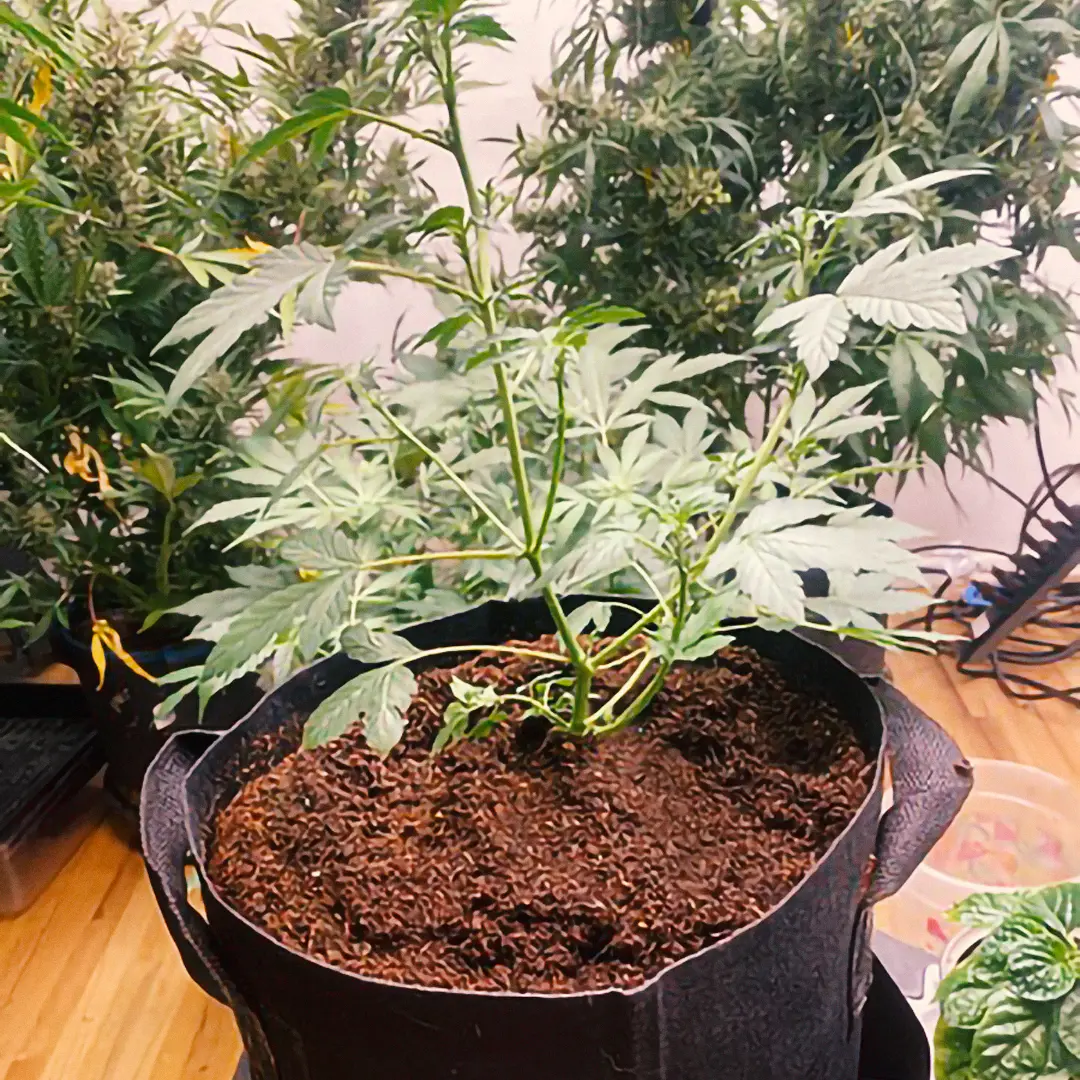 Plant grown in Coco Coir by forum user Graysin
Plant grown in Coco Coir by forum user Graysin
Coco coir accelerates growth by combining water retention with superior aeration. It provides growers with greater control over feeding, prevents many soil-borne issues, and promotes the development of large root systems. This balance produces faster vegetative growth, stronger plants, and ultimately larger cannabis harvests compared to traditional soil-based cultivation methods.
Our Bestsellers
Coco vs. Soil: What’s the Difference?
Growing cannabis in coco coir differs from growing in soil in that it is inert and fast-draining. It requires added nutrients but provides more control. Soil contains natural fertility and microbes, but nutrient release is a slower process. Coco growers achieve faster results, while soil growers benefit from natural buffering and traditional fertility practices.
| Medium | Advantages | Considerations |
|---|---|---|
| Coco Coir | Fast nutrient delivery, pathogen-low start, adaptable, high water retention | Needs nutrient supplementation; water-holding may vary; pH may drift |
| Soil | Built-in nutrient cycling, buffering benefits, natural fertility, rich microbiome | Nutrient release slower; variable structure; microbial dependency |
How Do I Choose the Right Coco Coir for My Grow?
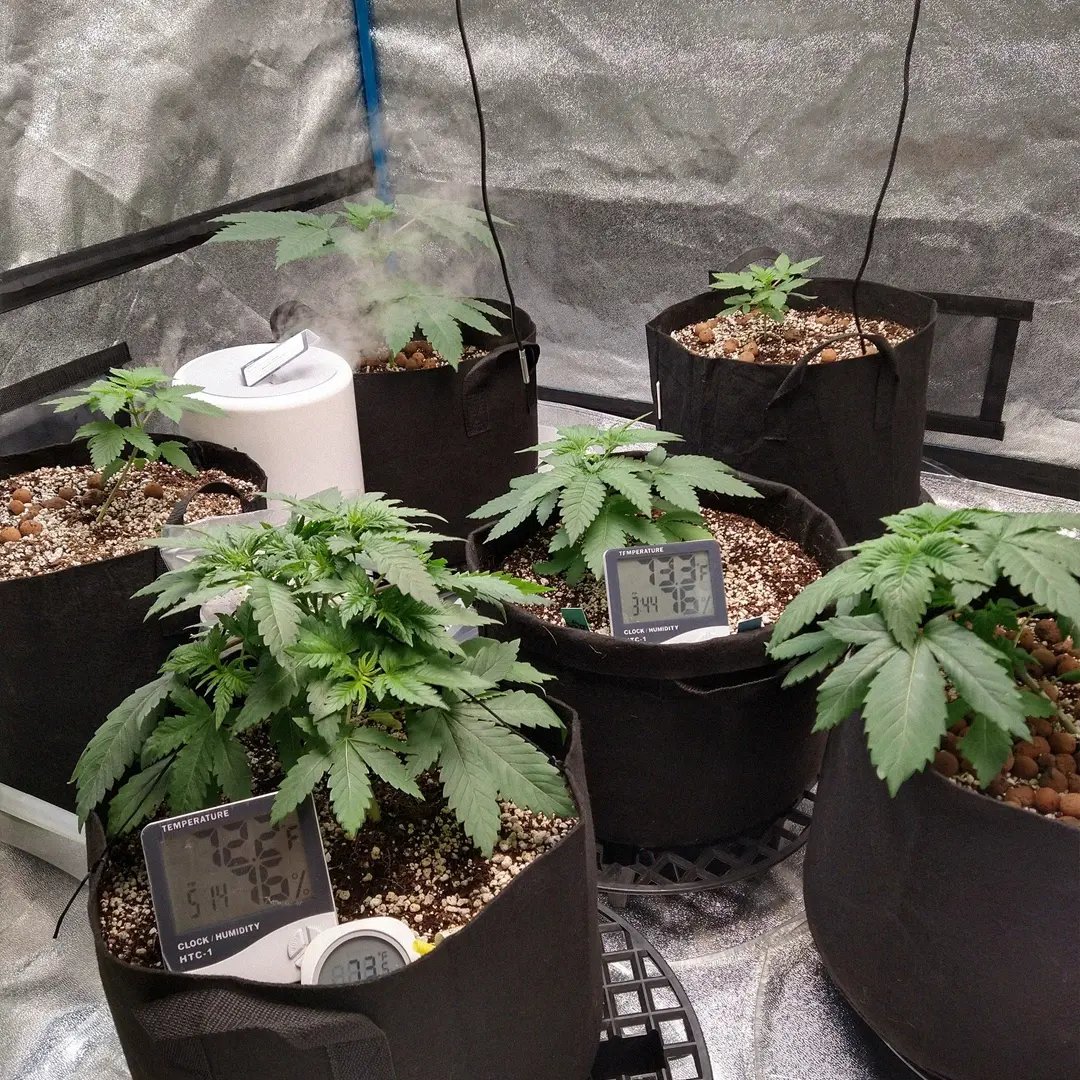 Plants in Coco Coir grown by forum user ChaseV89
Plants in Coco Coir grown by forum user ChaseV89
Choosing coco coir comes down to whether it is buffered or unbuffered, and whether it is in straight or mixed form. Buffered coco saves time and prevents nutrient issues. Straight coco retains more water, while mixes with perlite improve drainage. Match your choice to your growing system, plant size, and feeding style.
So you already like what you have read about coco coir, and are ready to give this excellent growing medium a try. The next question is, how do you choose the right coco coir for your grow?
What is Buffered and Unbuffered Coco Coir?
Coco coir, before using, needs to be buffered. The reason is that coco coir contains sodium and potassium. This is known as unbuffered coco, and the method for buffering it involves replacing the sodium and potassium with calcium and magnesium by soaking the substrate in a pH-adjusted calcium-magnesium solution in advance. It may sound complicated, but I can assure you it’s actually simple and easy to do.
Buffered coco means that someone out there has already done you the favour of washing out the sodium and potassium. Meaning that your buffered coco coir already contains the right amount of calcium and magnesium, and is ready for you to germinate your favourite seeds or rooted clones into a kick start to your career as a coco grower!
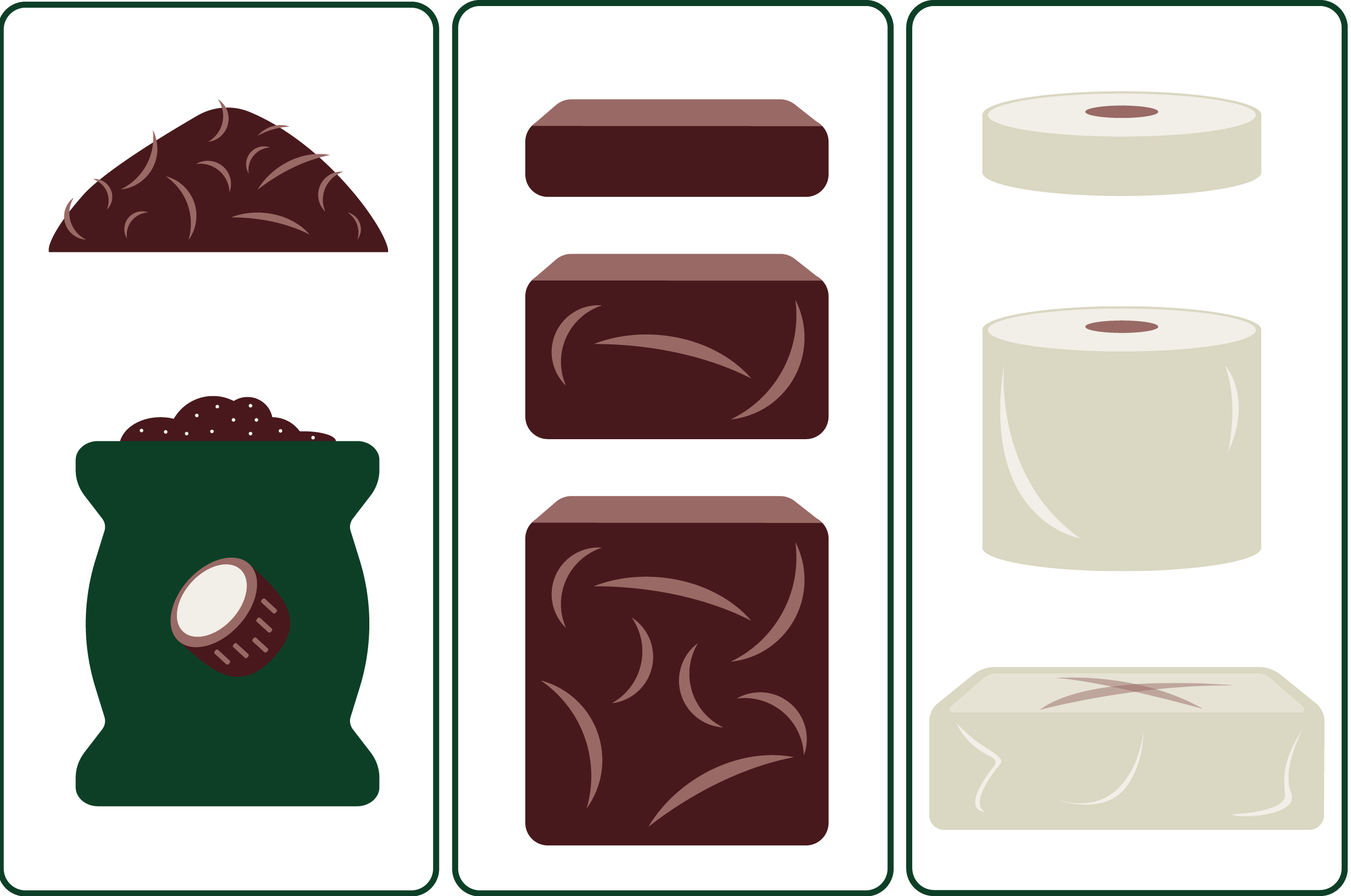 There are multiple different options when using Coco Coir; from sacks filled with coco to slabs and pellets.
There are multiple different options when using Coco Coir; from sacks filled with coco to slabs and pellets.
Should I Use Straight Coco or a Mix (e.g. with Perlite)?
Either straight or mixed with perlite. Mixed coco, which typically contains 30-50% perlite, can accelerate the drying phase and is often the preferred choice for hydroponic growers using dripper systems or flood and drain tables. Either way, your plant roots will go wild once they establish themselves in a straight or mixed pot of coco coir.
Where Do I Buy Quality Coco Coir?
When it comes to purchasing coco coir get it where you get most of your cannabis growing supplies. You will have the option to source it from your local grow shop, who usually have 50L sacks piled up to the ceiling. They will usually also offer a compressed brick version. Alternatively, you can go online and check out the range of coco coir products available, as coco coir comes in various shapes and sizes, from jiffy plugs for clones to 50L sacks.
First Grow?
How Should I Prepare Coco?
If the coco coir you have does not state that it has already been buffered, you will need to buffer it yourself. Unbuffered coco must be soaked in a calcium-magnesium solution before use to remove excess sodium and potassium. This process stabilizes pH and prevents nutrient lockout. Properly prepared coco coir creates an ideal root environment, ensuring your plants absorb nutrients effectively, preventing nutrient lockout and pH instability.
Why Does Pre-Soaking Matter? (pH + Cal-Mag)
The simple answer is to avoid the coco substrate from sucking up all the cal mag from your liquid nutrients before it has a chance to get to the plants. Now, who wants that to happen? Certainly not me and definitely not you! Coco coir has a high cation exchange capacity (CEC). In other words, the coco coir fibres can hold and exchange positively charged ions known as cations.
How Do I Buffer Unprepared Coco at Home?
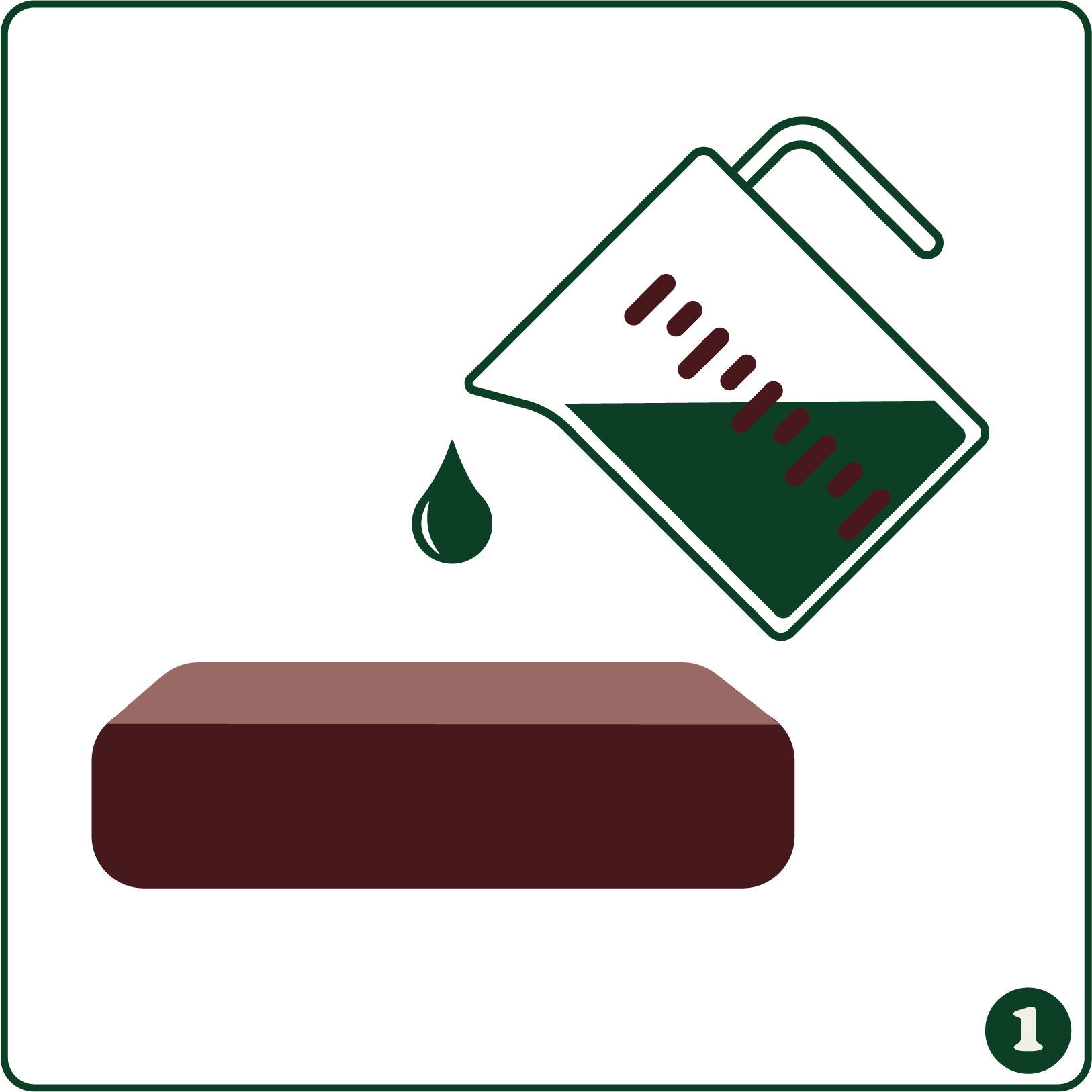
Step 1: Saturate the coco and allow it to expand if the coco coir is a compressed dry brick. Use 1 gallon of water for every kilogram of dry coco coir.

Step 2: Using a plastic tub with drainage holes, or my preferred method of a fabric pot, place the expanded coco coir inside.
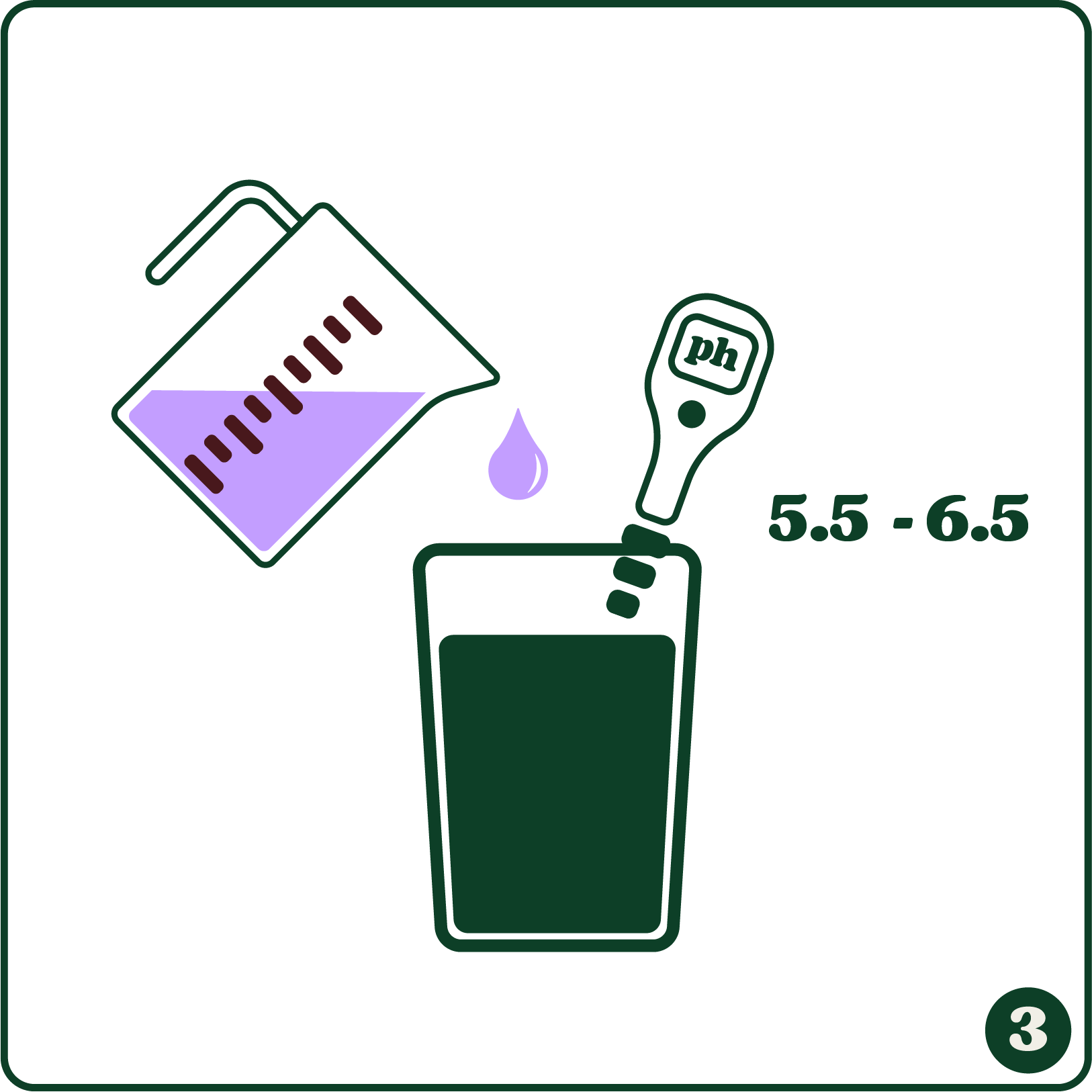
Step 3: Using a calcium and magnesium liquid nutrient, pour it into water and check the pH using a digital pH pen (5.5 - 6.5).

Step 4: Next, pour the calcium magnesium solution into the plastic tub or fabric pot, ensuring the expanded coco is well-soaked.
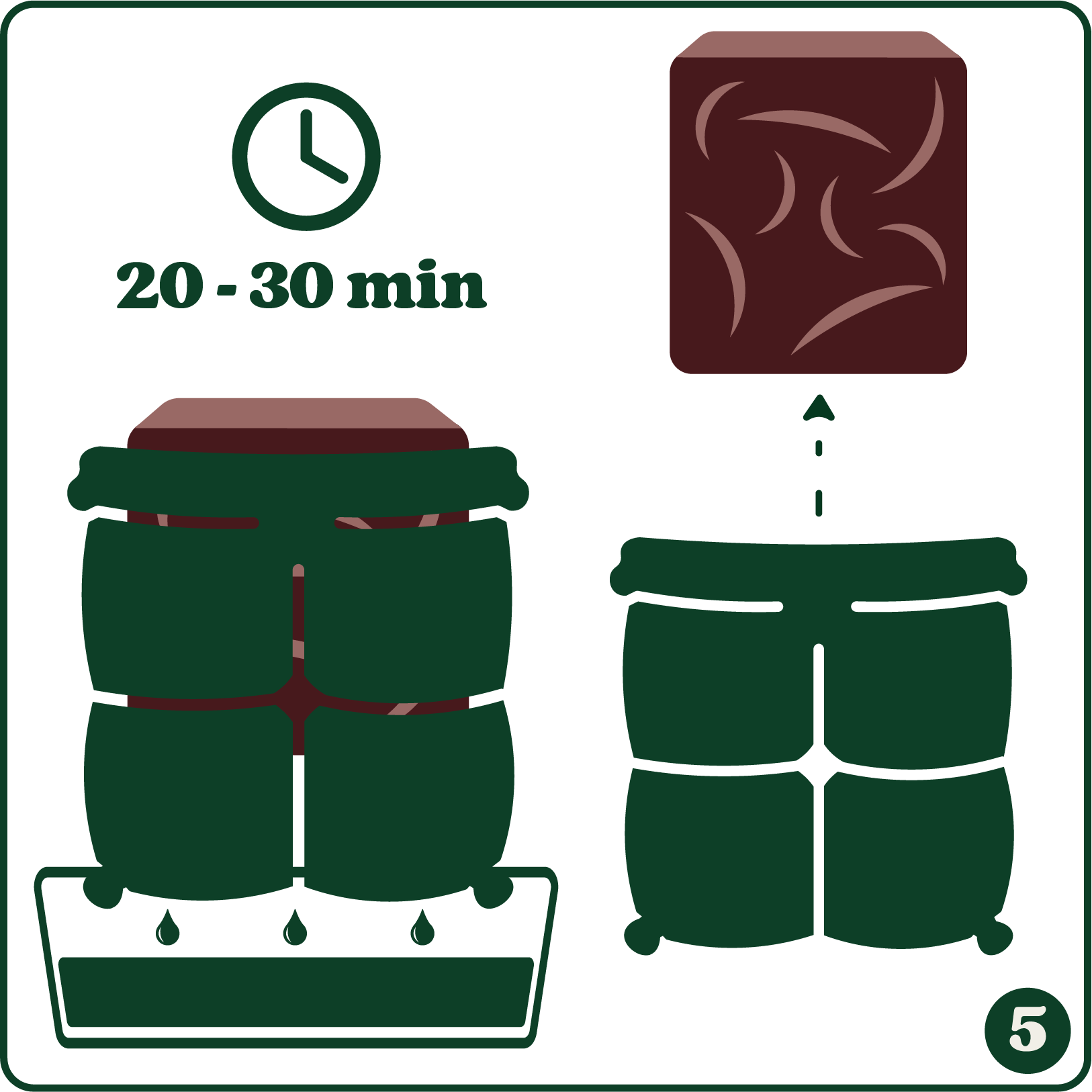
Step 5: Once the cal mag solution has washed over the coco and slowly drained away, wait until the coco feels wet, airy, and has a spongy texture. (This process usually takes around 20-30 minutes)
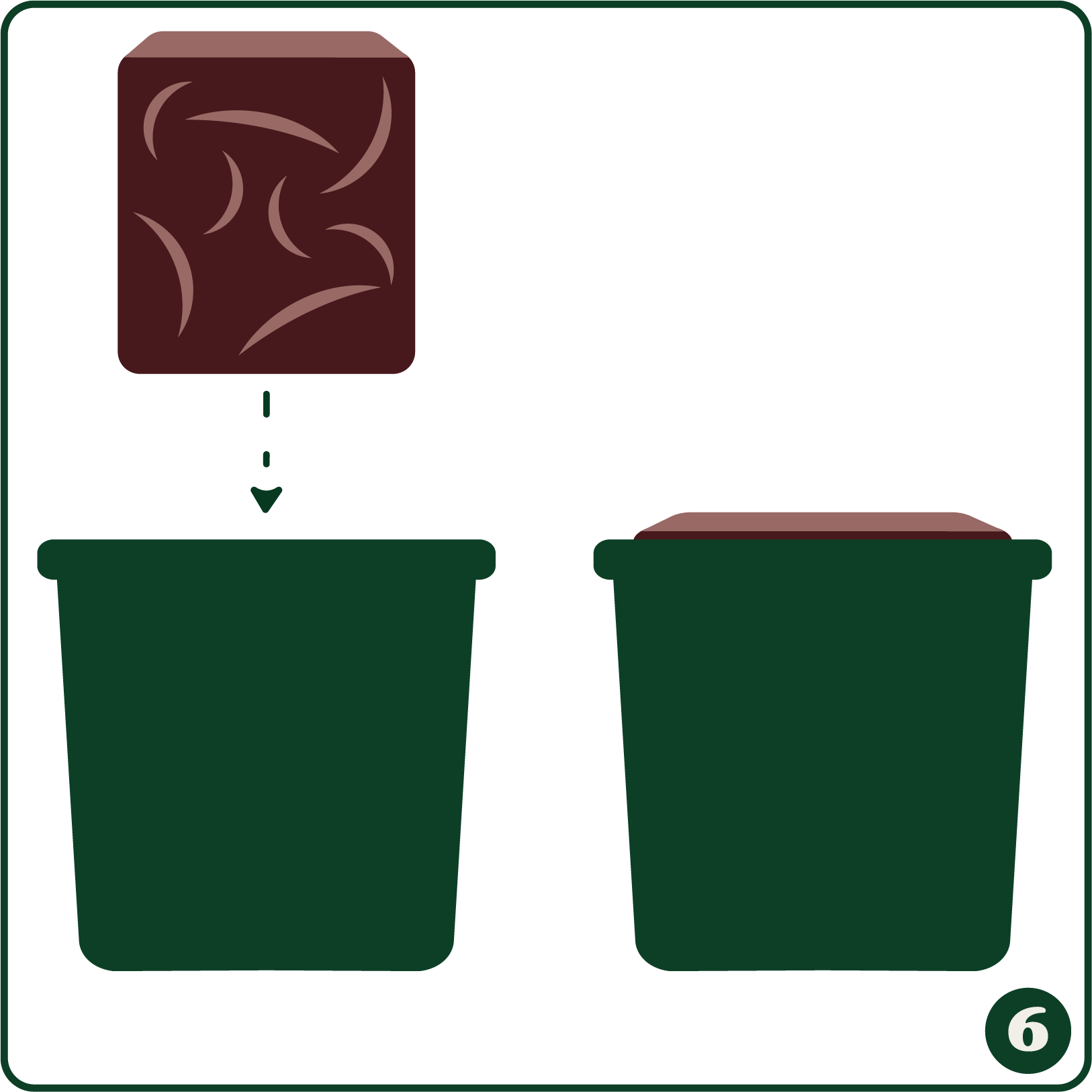
Step 6: Fill your grow pots with the buffered coco, ensuring it feels light and no water is dripping from the coco fibres.
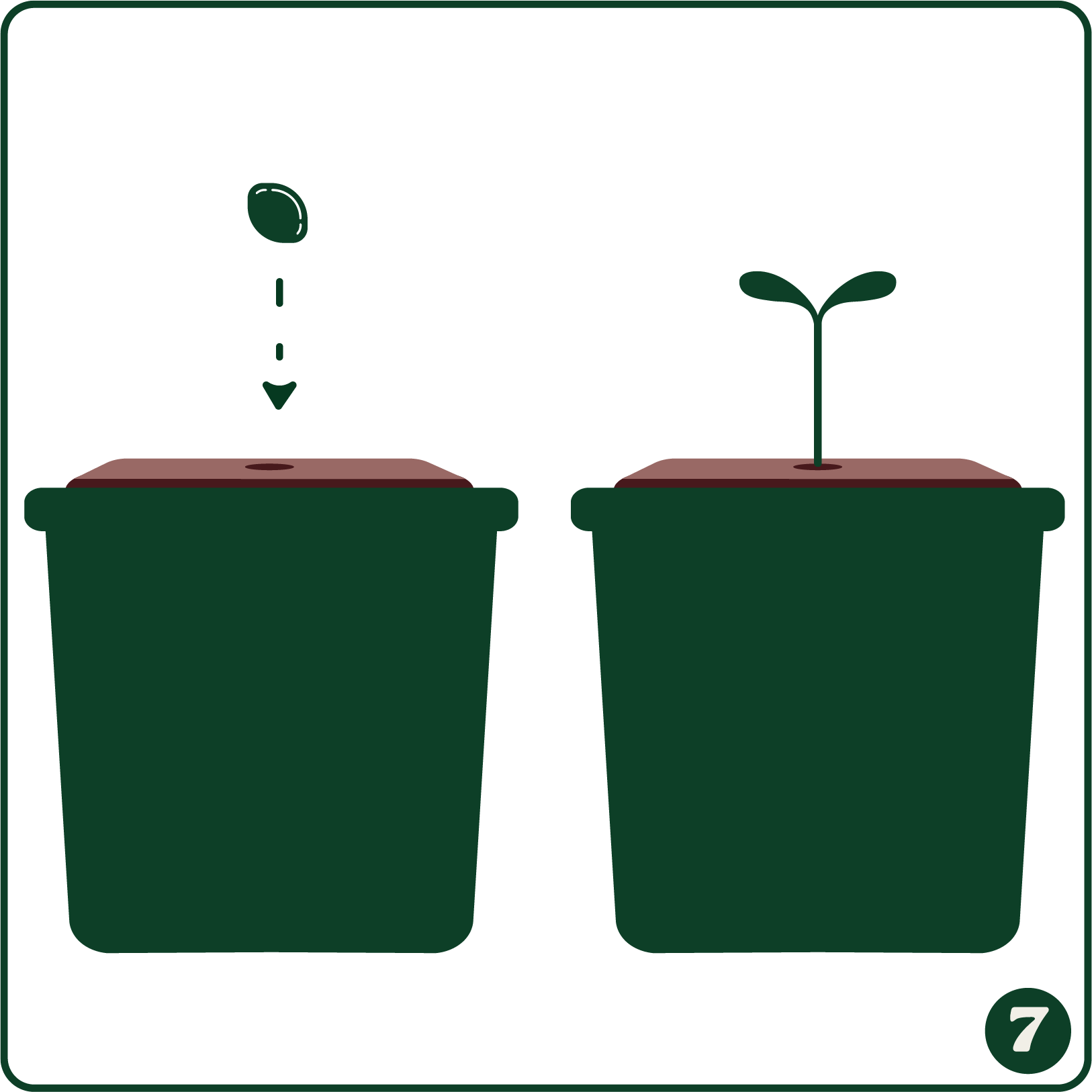
Step 7: Once each pot is full, lift it up to double-check that there is no water dripping from the base. Then, place your germinated seeds or clones inside, and that’s it!
What Are The Best Containers and Setup for Coco Coir?
Coco coir is best suited for containers with good airflow and drainage, but fabric pots are favored for air pruning and root density, while plastic pots also work. Coco suits setups from drip irrigation to flood-and-drain.
The fantastic quality that makes coco coir so unique and popular among home growers is that it contains numerous air pockets and can hold 8-9 times its own weight in water. The risk of overwatering your plants is minimal, so which containers work best when growing cannabis using coco coir? Well, let’s find out…
Fabric Pots vs. Plastic Pots
 Plant grown in a fabric pot using Coco Coir, by forum user Jaydizzzzle
Plant grown in a fabric pot using Coco Coir, by forum user Jaydizzzzle
Fabric pots or plastic pots? I am a massive fan of fabric pots, as they promote root pruning and produce a compact root mass full of root hairs. Plastic pots work well with coco coir; however, it all depends on your budget, grow space, and whether you plan to use a Sea of Green setup (SOG) with short vegetation times or keep your plant count short and sweet.
Drainage and Airflow: What Your Roots Need
The bigger your roots, the bigger your fruits! Coco coir is easily the best way to give your seedlings or clones an explosive kick start, and that’s thanks to the abundance of air pockets and top-quality drainage the substrate provides. Roots love oxygen, and that’s one thing they will get and need when planting using coco coir.
Setting Up Your Grow Environment
Here are my two favourite ways of growing with coco coir:
Coco coir works incredibly well in a Sea of Green setup (SOG), particularly when used in small-sized containers (2-gallon pots) with a large plant count of around 25-36 plants, all set up with dripper stakes.
On the other hand, if your game's goal is to keep the plant count low, consider filling a 13-gallon fabric pot with a 50/50 coco coir/perlite mix and using drippers for phenomenal yields.
Below is a list of all the options available when growing with coco.
Sea of Green dripper system using 2-gallon pots
Large-sized fabric pots using a drip ring or drip stakes
Flood and drain systems using straight coco or a 50/50 perlite mix
Coco coir inside a Kratky system (no pump or air stone required)
DWC with net pots filled with coco coir
How Do I Water and Feed Cannabis in Coco Coir?
Since coco coir contains no nutrients, you control the entire feeding program. Plants require daily watering with coco-specific nutrients and calcium-magnesium (Cal-Mag) supplementation. Maintaining a stable pH between 5.8 and 6.2 ensures optimal nutrient uptake. Consistent watering and regular runoff checks help prevent salt buildup and nutrient deficiencies.
Daily Watering Schedule by Stage
Here is a table of a daily watering schedule that I use, which may be helpful when watering your crop.
| The Different Stages of Growth | How Often To Water Using Dripper Systems | pH Level |
|---|---|---|
| Seedling Stage (18/6) | 1 time per day - Wait for the medium to dry out | 5.8 - 6.2 |
| Vegetation Stage (18/6) | 2 times per day - Wait for the medium to dry out | 5.8 - 6.2 |
| Flowering Stage (12/12) | 3 -5 times per day - Wait for the medium to dry out | 5.8 - 6.2 |
Feeding Tips: Nutrients, EC, and Cal-Mag for Coco
If you are using coco coir, you'll need to buy nutrients specifically designed for it. Avoid using organic nutrients, as these will block dripper systems and drip lines.
Use a digital EC pen to test the strength of your nutrients by inserting the pen into your nutrient solution and reading the value.
During the seedling stage, aim for an EC level of 0.6.
During vegetation, aim for an EC level between 1.0 - 1.2
During flowering, aim for an EC between 1.8 - 2.0 for the flowering stage.
As long as you have buffered the coco coir before planting, then follow the nutrient company's feeding chart when making a cal-mag nutrient solution.
What does “Watering to Runoff” Mean?
Watering to runoff means applying the nutrient solution until 10–20% drains from the pot. This flushes excess salts, evenly distributes nutrients, and helps maintain correct pH and EC levels. Watering cannabis with regular runoff ensures healthy root zones, prevents lockouts, and keeps plants thriving throughout the grow cycle.
 When you water your pots from the top, approximately 30 seconds later, water will begin to pour out of the bottom slowly. This is what is known as the runoff! The reason run-off is essential is to ensure the nutrient solution has sufficiently passed through the coco fibres inside the pot, saturating the roots. The runoff should also be tested to ensure that the pH levels remain within the 5.5-6.5 range and that the EC levels are similar to those initially present.
When you water your pots from the top, approximately 30 seconds later, water will begin to pour out of the bottom slowly. This is what is known as the runoff! The reason run-off is essential is to ensure the nutrient solution has sufficiently passed through the coco fibres inside the pot, saturating the roots. The runoff should also be tested to ensure that the pH levels remain within the 5.5-6.5 range and that the EC levels are similar to those initially present.
What Are The Most Common Mistakes When Growing in Coco? And How Can I Avoid Them?
Common coco mistakes include failing to buffer, inconsistent feeding, poor pH control, and salt buildup. Overwatering fears are misplaced, since coco holds water and air simultaneously. Prevent problems by buffering coco, feeding daily with Cal-Mag, monitoring runoff, and flushing periodically to maintain balanced nutrient levels. Read about stress training for healthy growth.
Overwatering Myths
If you have experienced waterlogged soil that starts to smell bad and causes root rot, I feel your pain. However, coco coir is such a flexible and grower-friendly medium, as it can hold 8-9 times its own weight in water! Impressive, I know…so hopefully that eliminates any concerns you may have of overwatering.
Salt Buildup and How to Prevent It
All cannabis nutrients contain salts, especially in hydroponic nutrients. Salt buildup indicates high amounts of undissolved salts around the roots. Check the runoff from the pots and see if the EC level is in the sweet zone. If not, simply flush the coco coir with pH-adjusted water between 5.5 and 6.5 until the runoff EC is optimal. Signs of Cal-Mag Deficiency in Coco Grows
Calcium and magnesium are essential for plant health and development. Coco coir can pull calcium magnesium (Ca-Mg) from your liquid nutrients only when the medium has not been buffered. So if you have sodium and potassium still present, be prepared for a potential calcium magnesium deficiency.
More Things To Know About Your Coco Grow
Can I Reuse Coco Coir?
You can, but you need to thoroughly flush and wash out any undissolved salt residue that has accumulated over the entire grow cycle.
Do I Ever Water Without Nutrients?
For the final 14 days, continue using nutrients and monitor the pH and EC levels. When it's time to flush, switch to plain water only, and hey presto!
What’s the Best pH for Coco Cannabis?
Suppose you can dial in a pH level between 5.8 and 6.2. In that case, you will produce a superb crop with the optimal nutrient uptake and availability.
*Main image by our forum user Jaydizzzzle

Stoney Tark
Stoney Tark, a top cannabis writer & breeder, shares expert tips on growing, breeding & hash making. Author, podcaster & industry voice!


